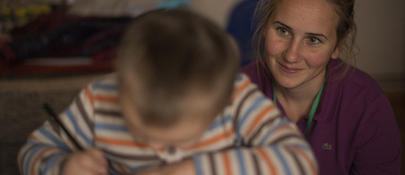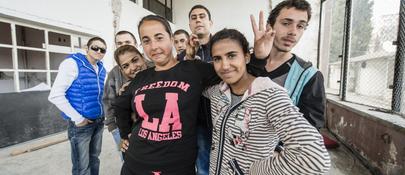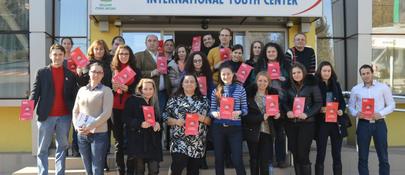
The Challenge
Children growing up in poverty or social exclusion are less likely to do well in school, enjoy good health and realise their full potential later in life. Child-centred solutions are fundamental to achieving social inclusion and long-term sustainable economic growth.
Promoting the rights of children
Children should grow up in an environment that enables them to become confident and autonomous adults. Recognising children as individual right holders is vital for them to grow up to be active members of society.
Child-friendly justice
Around 2.5 million children participate in judicial proceedings across the EU every year.
The judicial systems in Europe need to adapt to their needs by strengthening the child protection systems, providing individualised support and, ultimately, guaranteeing the effective implementation of the rights of the child.
Child poverty and social exclusion
Children are more likely to suffer from poverty and social exclusion than adults. Poverty, limited access to education and difficult living conditions are the main factors leading to social exclusion. In addition, the internet and new technologies have increased the exposure of vulnerable groups to discrimination, marginalisation and exclusion.
Social care and health services
The childcare system needs to shift from institutional care to community-based services providing a family environment. According to the EU Agency for Fundamental Rights (FRA), 60% of EU countries have adopted measures to deinstitutionalise child welfare services. Examples include Bulgaria, Latvia and Lithuania that have developed community-based social, educational, cultural and health care services but establishing alternatives to institutional care remains a challenge in many European countries.
Our Approach
Our goal
We work to improve child protection, empower children and youth and promote social inclusion.
How?
To the help disadvantaged children, combat child poverty and promote child well-being across Europe, we support activities such as:
- Protection of child victims of trafficking, sexual abuse and violence.
- Early childhood education and prevention of early school-leaving.
- Empowerment of children and young people to participate in decision-making processes.
- Innovative approaches helping children with behavioural problems.
Creating partnerships
The exchange of knowledge and experience is essential to find a common approach to protect and promote the rights of the children and youth at risk. Organisations from the donor and beneficiary countries are therefore encouraged to cooperate through our programmes.
Both donor and beneficiary countries benefit by sharing experience and best practice to meet common European challenges. The Norwegian Institute of Public Health and the Norwegian Directorate of Health are Donor Programme Partners in this area and can assist organisations who wish to get involved.
Children and youth at risk and social issues are entwined and require a horizontal approach. This is why, in addition to targeted programmes, children well-being is also a focus in areas such as local development and poverty reduction, research, education and public health.




